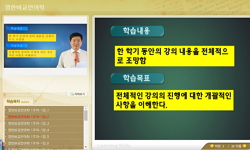This paper analyzes the patterns and types of exaggeration in newspaper articles covering the 33rd Paris Olympics to examine the linguistic characteristics of exaggeration in sports articles. Exaggeration appears across various parts of speech, inclu...
http://chineseinput.net/에서 pinyin(병음)방식으로 중국어를 변환할 수 있습니다.
변환된 중국어를 복사하여 사용하시면 됩니다.
- 中文 을 입력하시려면 zhongwen을 입력하시고 space를누르시면됩니다.
- 北京 을 입력하시려면 beijing을 입력하시고 space를 누르시면 됩니다.
https://www.riss.kr/link?id=A109586593
-
저자
Dongmei Cao (정저우 관광대학) ; 이래호 (강원대학교)
- 발행기관
- 학술지명
- 권호사항
-
발행연도
2025
-
작성언어
Korean
- 주제어
-
등재정보
KCI등재
-
자료형태
학술저널
-
수록면
289-343(55쪽)
- DOI식별코드
- 제공처
-
0
상세조회 -
0
다운로드
부가정보
다국어 초록 (Multilingual Abstract)
Exaggeration appears across various parts of speech, including nouns, verbs, modifiers, and particles, with noun-based expressions being most prominent for emphasizing athletes, matches, and results. Verb-based exaggerations highlight the course and outcome of matches or emphasize players’ skills, while modifiers and particles intensify descriptions of fierce competition and athletes’ popularity through extreme scales of expression.
Exaggeration types are categorized into “maximization,” “amplification,” “minimization,” “over-generalization,” and “contrast,” with “maximization” being the most frequent. “amplification” emphasizes intensity without reaching the ultimate degree, while “minimization” underrepresents aspects to create an emphasis effect. The use of adjectival phrases of Sino-Korean origin is notable, and both linguistic and contextual exaggerations are observed. However, excessive use of exaggeration can lead to the “ceiling effect” and “basement effect,” diminishing the impact of such expressions.
This paper analyzes the patterns and types of exaggeration in newspaper articles covering the 33rd Paris Olympics to examine the linguistic characteristics of exaggeration in sports articles.
Exaggeration appears across various parts of speech, including nouns, verbs, modifiers, and particles, with noun-based expressions being most prominent for emphasizing athletes, matches, and results. Verb-based exaggerations highlight the course and outcome of matches or emphasize players’ skills, while modifiers and particles intensify descriptions of fierce competition and athletes’ popularity through extreme scales of expression.
Exaggeration types are categorized into “maximization,” “amplification,” “minimization,” “over-generalization,” and “contrast,” with “maximization” being the most frequent. “amplification” emphasizes intensity without reaching the ultimate degree, while “minimization” underrepresents aspects to create an emphasis effect. The use of adjectival phrases of Sino-Korean origin is notable, and both linguistic and contextual exaggerations are observed. However, excessive use of exaggeration can lead to the “ceiling effect” and “basement effect,” diminishing the impact of such expressions.
동일학술지(권/호) 다른 논문
-
문화경관의 보존과 지속 가능한 예술관광: 퐁텐블로 숲, 지베르니, 오베르쉬르우아즈의 경우
- 전북대학교 인문학연구소
- 노시훈
- 2025
- KCI등재
-
- 전북대학교 인문학연구소
- Zhengli Hu
- 2025
- KCI등재
-
- 전북대학교 인문학연구소
- 김일환
- 2025
- KCI등재
-
- 전북대학교 인문학연구소
- 전가람
- 2025
- KCI등재





 KCI
KCI KISS
KISS






